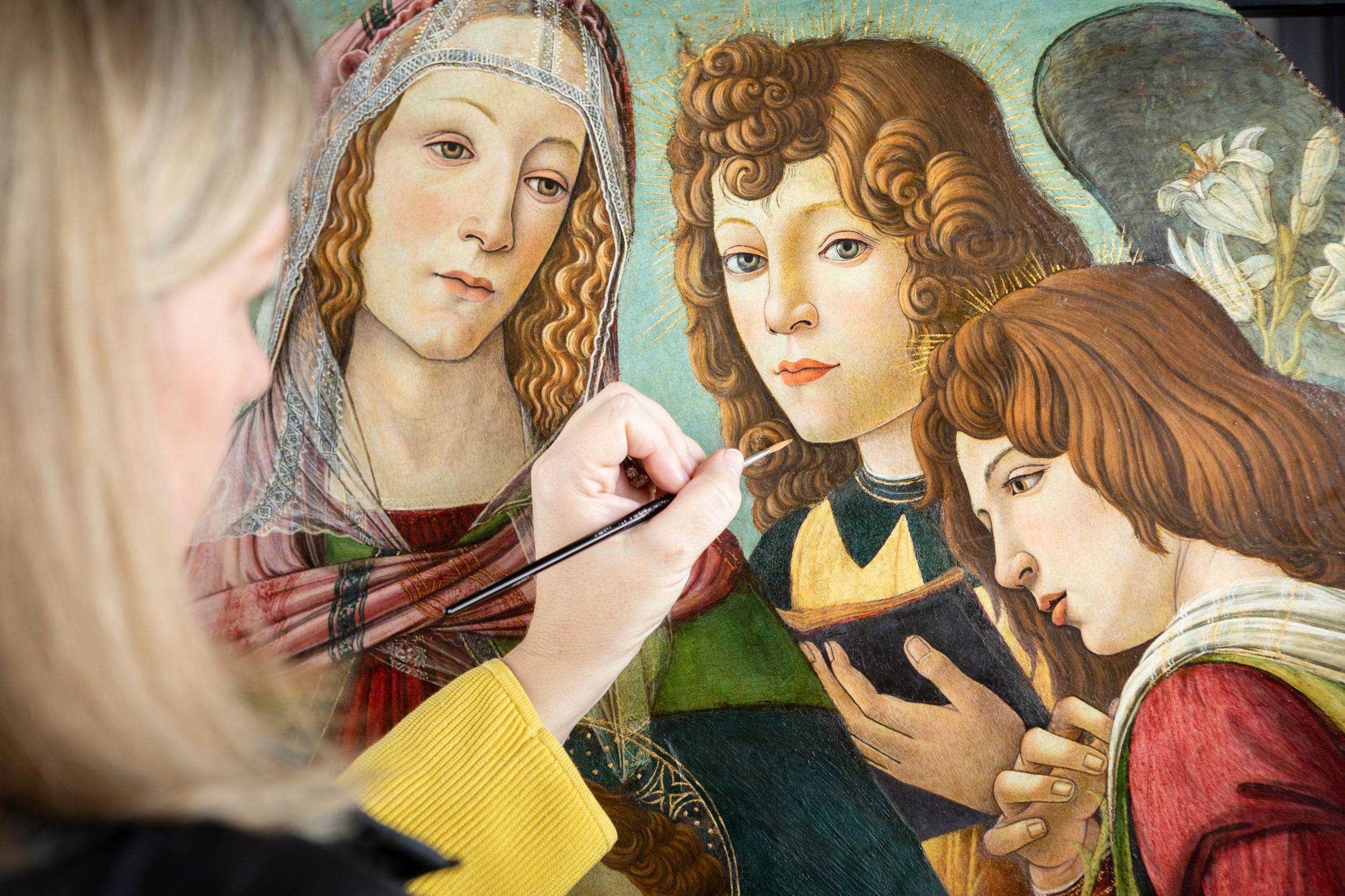'Fake' Botticelli masterpiece turns out to be real
A century's worth of varnish and substantial areas of overpainting led to fears that it was a poor-quality copy, but analysis found a 'striking resemblance' to works produced from Botticelli's own workshop

Experts have discovered that a Botticelli painting believed to be fake is in fact a rare original produced by the artist's own workshop, after removing more than a century's worth of yellow varnish.
The artwork was believed to be an imitation of the Renaissance painter's famous Madonna of the Pomegranate due to the varnish and substantial areas of overpainting, which led to fears that it was a poor-quality copy.
However, X-ray testing, infrared studies and pigment analysis revealed that the painting, which boasts vivid reds, blues and golds, was created at Botticelli's workshop in Florence during the 15th century.
English Heritage's senior collections conservator Rachel Turnbull said that after consulting with experts at the Victoria & Albert Museum and the National Gallery, they were "finally able to confirm" that the Madonna of the Pomegranate painting was by Botticelli.
“Being able to closely examine and conserve this painting for the first time in over 100 years has really given us the chance to get up-close and personal with the paintwork." she said. “I noticed instantly that the painting bore a striking resemblance to the workshop of Botticelli himself.
“Stylistically it was too similar to be an imitation, it was of the right period, it was technically correct and it was painted on poplar, a material commonly used at the time.”
She added: “After removing the yellowing varnish, x-ray and infrared examination revealed under-drawing, including changes to the final composition uncommon in straight imitations.”
The 1487 painting, which depicts Madonna and Christ Child flanked by four angels, was bought by diamond magnate Julius Wernher in 1897 and hung in a number of grand English homes until his collection was loaned to English Heritage several decades ago. A famous, larger version – the original – is currently on display at the Uffizi Gallery in Florence.
It was long-assumed this painting was an imitation, by an unknown artist, because it varied in detail to the original and because of the thick yellow varnish that concealed the quality of the work.
Madonna Of The Pomegranate will go back on display when Georgian villa Ranger's House reopens to the public from 1 April.
Additional reporting by Press Association
Join our commenting forum
Join thought-provoking conversations, follow other Independent readers and see their replies
Comments